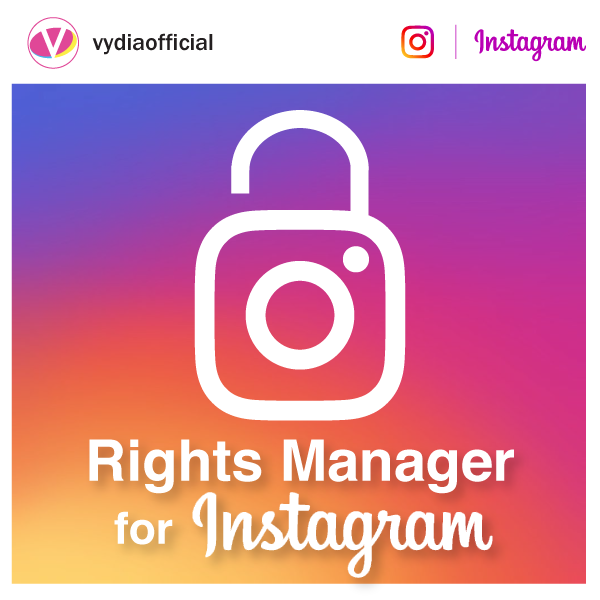At the end of last year, Instagram revealed a new feature that is sure to disrupt the video technology landscape— for the first time since its launch back in 2010, Instagram is automating the way its 800M monthly users protect their intellectual property. With the help of Facebook’s Rights Manager, Instagram’s new protection policies will rival some of the top video hosting platforms like YouTube. This move towards automated content protection may also be what drives creators exclusively to Instagram and away from similar platforms who have not established any form of automated copyright protection for its users (e.g. Snapchat). Here’s everything you need to about Rights Manager for Instagram and tips to help you get started with protecting your content:
What Is Rights Manager?
Facebook launched Rights Manager in 2015 to enable video creators to protect their content at scale. Initially, the protection tool only permitted users to manually upload and maintain a library of video content to monitor and protect. This tool remained relatively unchanged, until last May when Facebook gave it a complete overhaul to offer its users a higher level of protection similar to YouTube’s Content Management System (CMS). The current Rights Manager automates the protection process by letting creators simultaneously upload and set their protection policies for multiple videos at one time instead of on a case-to-case basis. The different protection policies include:
- Block– restrict 3rd parties from re-uploading any protected content
- Permit (Monitor)– protected content will remain viewable on Facebook for added reach, allowing video creators to monitor all of the matched video metrics like views and follows.
- Monetize (Claim Ad Earnings)– video creators will be able to claim a share of the money generated when an Ad Break runs on a piece of reposted content (currently very limited)
How Rights Manager Works With Instagram
Facebook is expanding the capabilities of its Rights Manager to protect videos on Instagram, which it acquired in 2012. In order to start protecting your Instagram content, you’ll need to submit your content through an approved Facebook / Instagram partner such as Vydia. Once your content is ingested into the Rights Manager, it will work very similar to YouTube’s Content ID system, in which the references will detect any matching content and apply the chosen policies across Facebook and Instagram. There are a few important things to note before activating Rights Manager for Instagram:
- Currently, Instagram users will only be able to apply the Block or Permit (Monitor) policies to their video, monetization is not available on Instagram at this time (but has potential in the future).
- Protection policies only apply to certain Instagram videos including those that appear in the Feed, Explore page, or in Live— as of now, users will not be able to protect their Stories.
- Rights Manager technology will work for both public and private Instagram profiles.
When it comes to protecting your intellectual property, don’t limit yourself to a single platform. Ensure your content is being protected across the digital landscape with Vydia Content Protection. This comprehensive tool streamlines the protection process by allowing users to predetermine their protection policies, for each platform, during the same easy workflow. Vydia Content Protection is currently available for YouTube and Facebook; keep an eye out as we will be rolling out this feature for Instagram soon!
